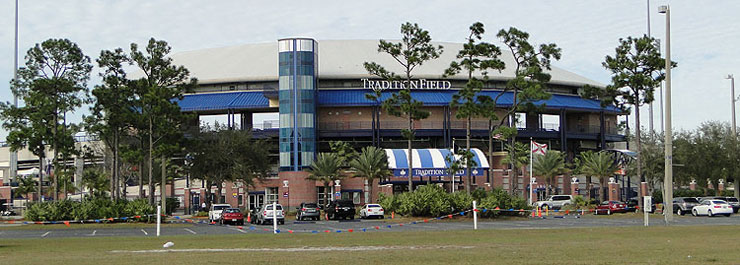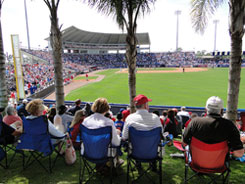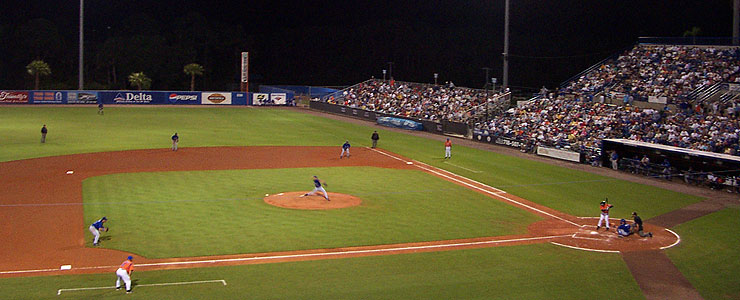
|
Despite its modern sounding name, Port St. Lucie’s Digital Domain Park is more old school than cutting edge.
Designed in an era of mere functionality, the thrice named stadium has undergone millions of dollars in renovations since it opened in 1988 to add the amenities it originally lacked and some color and class to what was once an aesthetic eyesore. As a result, the Mets are still in town after their original 15-year lease ran down and the stadium in which they play their spring training games looks and feels less like a scaled down version of where they formerly played their regular season games (Shea Stadium) than it did at the outset. At its best, Shea Stadium was a bland, big place with an overabundance of exposed concrete. One-eighth its size, what opened as Thomas J. White Stadium took some design cues from Shea, whose outfield dimensions were replicated and are still maintained at Port St. Lucie’s ballpark. While mimicking the playing field dimensions of the Mets' big league ballpark is completely acceptable and maybe even advantageous for the team, the decision to use concrete as the preeminent unit of construction - and leave that drab gray material primarily uncloaked – meant the Mets’ Florida home gave first time visitors a not so pleasing first impression. Inside, things weren’t much better, and to get there fans first had to ascend ramps to the grandstand, a la Shea. Today, the ramps are still there but the concrete that was a hallmark of the tall exterior facade has been replaced, starting with redbrick at the base. Looking upwards, the exposed railings of the suite level concourse and the roof that covers it are painted different shades of blue, while the glass enclosed elevator tower to the left of the ticket office sports blue and white paneling to match the color pattern of the canopy that shades those waiting in line to buy or pick up tickets. The stadium’s name is prominently displayed on the uppermost portion of the façade above the ticket office, which is fronted by the Thomas J. White Plaza, named to remember the stadium's original namesake and benefactor. Fans waiting for tickets in the canopy-covered portion of the plaza are serenaded with a looping recording of "Meet the Mets," the team’s classic theme song that debuted 41 years before the 2004 dedication of the plaza in White’s memory.
Five granite makers are lined up horizontally behind the WTC Memorial. Less assuming in stature, three were erected in remembrance of Mets’ employees who have passed away, one bears the ballpark’s dedication plaque and the other seems out of place, as it’s simply there to state: "Investment For The Future - One Million Dollar Improvement Program - Completed February 1999." The ballpark underwent its biggest “improvement program” following spring training in 2003. The $10 million that was spent modified, enhanced and expanded the stadium, which was renamed Tradition Field upon the completion of the renovations to help offset some of the cost for the county and team, who jointly paid for the upgrades. The new name was courtesy of Core Communities, developer of the nearby master-planned Town of Tradition, and when they agreed to pay $150,000 annually for naming rights Port St. Lucie’s stadium became the sixth in Grapefruit League history to have a corporate-sponsored, non-traditional name (although Tradition Field didn’t make traditionalists squirm like they did when St. Petersburg’s iconic Al Lang Field was renamed Florida Power Park in 1998). Many of the amenities that Thomas J. White Stadium lacked were no longer lacking in its reincarnation as Tradition Field. But the most vivid example of the functionalism that defined the original design – the hulking cantilevered roof - remained as is. Which is to say big and ugly, although the drab gray concrete and ridged structure excels at its intended purpose of blocking the sun’s rays during the day, specifically for most fans that sit between the dugouts within the main grandstand, over which the roof is centered. The roof also blocks out most unnatural light at night for those sitting in the seven Upper Reserved sections (201-207) that it covers. The symmetrical main grandstand contains 13 sections and ever so slightly extends beyond the first and third base bags. Behind the grandstand is a cramped concourse, which has no room for expansion due to the ramps that take fans from the stadium’s street level entrances to the second story concourse level, where all seats are painted blue and have cup holders. The third story of the stadium is reserved for the press and VIPs, who can choose from a pair of luxury suites or the rudimentary open-air suites that flank them. Both of the open-air suites contain picnic tables while the luxury suites have the seats you'd expect. Directly above the suites is press row and on the façade between them is a mural of great Mets moments. Banners of those moments and player action shots are also interspersed throughout the concourse. Three rows of Premium Box seats are so close to the field that the five sections within which they are contained are bookended with plexiglas to separate them from the dugouts. A handful of fans sitting down either outfield line also find themselves within close proximity of the players they are paying to watch, as the bullpens are in foul territory. The Mets’ is in front of the party terrace down the left field line; the visitors’ alongside the bleachers that extend down the right field line. When pitchers for either team warm up, they do so throwing towards home plate and their pitches sail over grass that looks out of place, as it is planted only between the bullpens’ mounds and home plates. Meanwhile, the rest of the warning track that encircles the playing field is barren of any greenery, as is customary. For fans wanting autographs, the bullpens are the best place to be, as the pitchers and catchers gathered there will often sign their signatures on various artifacts between innings. Otherwise, autographs are hard to come by in Port St. Lucie. That is especially true for fans of the visiting team, since their bullpen is in one of two areas cut off from the rest of the ballpark. Those two areas are the bleachers and the berm, which have their own entrance gate down the right field line. Half of what is known as Stadium Gate C is set aside as the bleachers entrance, the other half for the berm.
As a result of the restrictiveness, fans in the berm have access to their very own concession stands and bathrooms. Upon entering Gate C, a paved incline the width of a standard sidewalk leads to the crest of the manmade hill that extends from just to the foul side of the right field pole to right-center field. About 400 people can fit on the well-maintained berm, which is set back a warning track’s width of feet from the outfield fence. The space between the two essentially acts as a gravel and electrical cable-filled "mote.” Nine of Florida's Grapefruit League parks have a berm, but Port St. Lucie can legitimately make a claim to being the spring training circuit’s best, with only the berms added (Lakeland) or built (Clearwater) at about the same time being worthy of inclusion in the best berm discussion. While Digital Domain Park itself will never be classified as picturesque, its right field extension is an exception as it’s beautifully appropriated with palm trees within the berm and picnic tables atop it that are covered by a blue and white canopy. Picnic tables can also be found behind the bleacher sections that are between the grandstand and berm. The freestanding bleachers have neither seat backs nor row numbers, so their 15 aluminum benches per section are filled on a first-come, first-served basis. The first served can include berm ticket holders, who are only segregated from their Gate C counterparts on days when big crowds (6,000+) are present. Down the left field line, three tiers of squared-shaped picnic tables are rented out by groups who enjoy shade provided by the oversized umbrella canopy that covers the concourse level portion of the party terrace. Built at the same time as the berm, the party terrace is home to a sizable tiki bar that serves up the best selection of beer found in the ballpark. Treats to eat that are featured at concession stands have a very distinct New York flavor, as Nathan's Famous hot dogs and knishes are served. Befitting of the era in which it was built, fans have no view of the playing field from the ballpark’s main concourse while they wait in line to get their grub. Visibility of the stadium’s sole scoreboard, which is topped by wind socks and a hand dial clock, is not an issue for fans in the grandstands or bleachers. Only those sitting at the far end of the berm can’t see the towering structure that rises just beyond the fence in the left field power alley. The ballpark’s outfield backdrop is mostly mundane. Viewable beyond the scoreboard in left are the Mets’ practice fields. The center field hitter’s backdrop is painted blue to match the color of the walls of varying height that encircle the playing field. The right field lawn allows for a pleasing contrast thanks to its lush green grass and the pine trees that fill the swampy wasteland that is beside and beyond the berm. Fans wanting to stock up on souvenirs are best served at the main team shop that’s outside of the ballpark, just to the right of the ticket office. Designated as simply “Mets FanGear,” the selection there and at the portable trailer stationed across the street from it is much better than what can be found at the smallish souvenir shop that's on the concourse level behind home plate. The placement of the team shop outside of the ballpark, which was officially renamed Digital Domain Park on March 23, 2010, typifies what’s wrong with the Mets’ spring training home. Even if fans can get their hand stamped to venture outside, they are still restricted from accessing all parts of the ballpark’s interior. And with the exception of VIP areas, that’s a big no-no in any modern venue. While the 21st century Digital Domain Park is a much better place than the 20th century Thomas J. White Stadium, separating the berm from the grandstand means that the ballpark experience in Port St. Lucie is defined by its restrictiveness, which is opposite the openness that baseball fans have come to except. Even in a retro ballpark building era that’s an outdated old school concept, and one that is all the more ironic at Digital Domain Park, a name inspired by a company that has thrived in the all-access digital era within which all entertainment now transpires.
Location and ParkingAs the crow flies, Digital Domain Park isn’t very far from I-95. But the car drive to it from the interstate near it can be a tedious task within an hour of game time, as traffic backs up thanks to the sole turn that must be made on the approximately 1.5-mile route. That turn comes about a half-mile after exiting I-95 at St. Lucie West Boulevard (#121), when baseball fans need to make a left to go north on Peacock Boulevard. A big error was made by the urban engineers at the intersecting boulevards, where the turning lane at the traffic light is just one lane wide. The singular turning lane is the cause for the poor egress at the Interstate’s exit and then the ensuing stop and go spurts of driving. Finally, when enough green lights have flashed, the ballpark is just a mile away on the right-hand side of Peacock, which is lined with all sorts of commercialism, ranging from a bowling alley to chain restaurants galore and a QVC call center. Digital Domain Park looms large at the end of the various retail/office strip centers and is visible well before the water-fronted and much easier to miss sign welcomes visitors to the St. Lucie County Sports Complex. Besides the Mets’ practice facilities, the Sports Complex is home to a house for bats of the non-baseball kind. The St. Lucie Bat House was built beyond right field in 1998 to serve as a relocation shelter for the thousands of Brazilian free-tailed bats that had taken up residence in the baseball stadium. After St. Lucie County spent $30,000 to "exclude" the flying nocturnal mammals from the stadium, an 8-foot wide by 4-foot tall barn was erected for them. Made of wood and supported 14 feet in the air by four stilts, the Bat House was designed to hold up to 15,000 inhabitants in its 160 compartments. A large lighted grass field serves as the stadium’s main parking lot. Between it and the stadium is a small paved lot with only enough room for a few lanes of spaces, which are generally reserved for the handicapped or such dignitaries as the County Administrator and her assistant. So most fans that pay the $6 it costs to park at the ballpark do so on grass instead of pavement. Also, there was a time when a discerning driver could park for free on the access road opposite of the stadium, but that area is now roped off.
Ballpark HistoryThe dedication plaque outside of the ballpark contains these words about the Florida home of the New York Mets: “Made possible by the people and governing bodies of St. Lucie County and Port St. Lucie, whose support of the Pennies for Progress, Tourist Tax Referendum, and St. Lucie West, was a vital contribution.” But it was developer Thomas J. White whose contribution was the most vital to the construction of a spring training stadium in one of the more unlikely locales in recent memory. While voters approved a referendum on October 2, 1984 that allowed the county to levy a tax on its hotel and motel rooms as their primary means of a financial contribution, it was the Thomas J. White Development Co. that put up the most dough for the $11 million facility, as the 2% tax on tourist accommodations that St. Lucie County collected only paid about $2.1 million of the project’s bill. Ironically, the Tourist Tax Referendum that St. Lucie County voters passed by a 5,782 to 5,106 count in 1984 was on the ballot at the behest of another company, called the General Development Corporation, who had pitched the County Commission on a one or two team complex in northern Port St. Lucie. But the commissioners later choose White over GDC, which was Port St. Lucie's largest developer. White’s company and the county formally agreed to become partners on July 23, 1985, at which time their initial target was the Cincinnati Reds, whose half-century stay in Tampa would end three years later, but in Plant City instead of St. Lucie West, the name of the 4,614-acre “new town for the 21st century” that White envisioned after paying $15 million for the land that he would develop around the stadium. The financing agreement between the St. Louis-based company that White headed and the St. Lucie County commissioners was formalized on December 27, 1985, although construction on the complex wouldn’t begin until December 19th of the following year. By then, the New York Mets had signed on to be the stadium’s tenant and St. Lucie West’s drawing card. While the county got a very good deal to be put on the Grapefruit League map, the Mets set the bold standard for negotiations to come in future deals between towns and teams. The contract that the Mets signed with the White Development Co. on June 4, 1986 gave them a lot and required little more than the team relocating from St. Petersburg, where they had trained since their 1962 inception.
White’s motives for such generosity, of course, were not all together altruistic. He looked at the team as the anchor tenant and publicity generator for his ambitious development, and the publicity was probably more important to him as St. Lucie County was far from bustling in the mid-1980s, when the US Census Bureau estimated it had just 121,383 residents the month after the Mets agreed to move there. So it was no surprise that the 100 acres of land that White had the St. Lucie County Sports Complex built upon had previously been a cattle ranch. The land and the complex would be White’s gift to the county and the reason that they named the stadium in his honor. Thomas J. White Stadium opened on March 5, 1988, when the Dodgers bused down from Vero Beach for the first of the Mets’ 14 scheduled home games in their inaugural spring on the Atlantic Ocean side of Florida. The Dodgers and all other visitors to the ballpark couldn’t yet use the planed exit for it off of I-95, so traffic had to go a few miles further south than necessary to use a Florida Turnpike exit and a two-lane road to get there. While the Mets lost to the former Brooklynites in extra innings, the stadium made more news than its first game outcome, as foul balls twice cracked the plexiglass in the lower boxes behind home plate. Then, with the score tied 2-2 in the 9th inning, the sprinklers turned on. Their spray caused a brief delay, and the Dodgers would burst for three runs an inning later off Todd Welborn to win 5-2 in 10. Wellborn, like so many other spring training invitees, never pitched in the major leagues, and proceeded to go 0-11 in Double-A in 1988 before losing his final three career decisions the following year. So perhaps it was appropriate he was the first game loser. Thomas J. White lost his life to cancer on December 29, 1989. In 1994, the Thomas J. White Development Co. sold controlling rights of St. Lucie West, and the responsibility for stadium debt, to Canadian-based Balfour Holdings, Inc. Balfour defaulted on the stadium’s $800,000 annual debt payment two years later and shortly thereafter Core Communities, Inc. became St. Lucie West’s developer. After Core fulfilled White’s original dream of selling out all single-family homes in the master-planned community of St. Lucie West, which was annexed by Port St. Lucie in 1985, they turned their attention to a new community they were building four miles from the stadium. That community was the Town of Tradition and a year after it was founded Core signed separate but essentially equal deals with St. Lucie County and the Mets to rename the stadium Tradition Field. The 10-year pact became official on February 18, 2004. Sixteen days later the Thomas J. White Plaza was dedicated to honor the “visionary builder” that “constructed and donated this facility to St. Lucie County,” as the plaque outside of the ticket office exclaims. The decision to drop White’s name from the stadium in favor of a sponsored one (Core paid $150,000 annually) was a financial one based on the need of the county and the Mets to help pay for a $10 million overhaul that was responsible for the Mets’ signing another 15-year lease after their original 15-year lease expired in 2003. With a developer no longer able (or willing) to foot the majority of the bill, the Mets stepped up to the plate and funded $7.25 million of the renovation’s cost, while St. Lucie County paid for the remainder with proceeds from their tourist tax, which had become a 5% addition to local hotel bills in the two decades following passage of the referendum that originally authorized 2% to be collected. As for that tax, of every fives cents on the dollar that is collected two pennies go to the operation and maintenance of the county-owned and operated complex and 1.67 cents pay the debt service on bonds the county issued to finance their portion of the reconstruction and renovation cost. The remaining 1.33 cents is used to promote tourism. Thanks to the renovations, St. Lucie County’s Tourist Development Council had a better ballpark to promote to baseball fans. Additions to the rebranded Tradition Field included a berm in right field, a party terrace down the left field line, a pair of open-air suites below the press box and an elevator to access them. Items improved were the stadium's lighting, exterior facade and scoreboard, which was relocated from right- to left-center field due to the building of the berm. Unfortunately, many of the improvements had to be repaired following the 2004 hurricane season when Frances and Jeanne hit the Port St. Lucie area. The total spent on the ballpark in renovations and hurricane repairs was $14 million. While the stadium recovered from its hurricane damage, Core Communities was one of many real estate companies affected by the financial crisis in 2008 that was spurred by huge losses in the mortgage-backed securities market. The recession ravaged company defaulted on a $95,769.17 naming rights payment due to the county by December 31, 2009, and two months later Core sent a two-sentence notice of naming rights termination letter to St. Lucie County. The county received the letter on March 2, the same day that the Mets hosted the Braves in the first official spring training game of 2010. By then, the unpaid fee to the county and team (which was due a similar payment on March 1) came as no surprise, which explains why there was no official mention of "Tradition Field" in the Mets 2010 spring training program. The team assumed responsibility for finding a new naming rights partner and it didn’t take them long. Three weeks after the Tradition Field name was officially terminated, Digital Domain Holdings put their brand on the front end of what had been a Stadium, then a Field, and finally a Park -- Digital Domain Park to be precise. And that will be the name of the Mets’ spring training ballpark through at least 2018, which is when their second 15-year lease expires at what is only the second spring training ballpark that the franchise has ever called (their Florida) home.
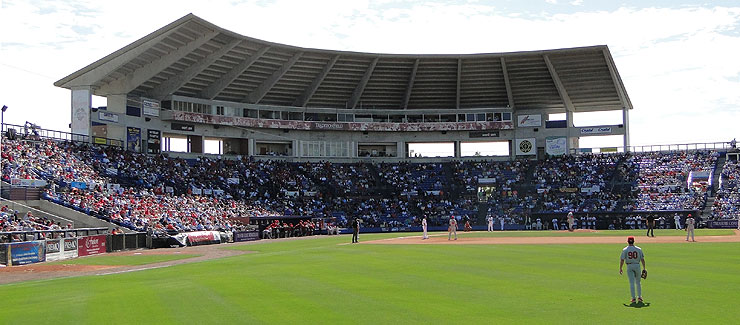
Digital Domain Park Facts, Figures, Firsts & FootnotesOther stadium firsts (all of which occurred on 3/5/88, unless noted):
| ||||||||||||||||||||||||||||||||||||||||||||||||||||||||||||||||||||||||||||||||||||||||||||||||||||||||||||||||||||||||||||||||||||||||||||||||||||
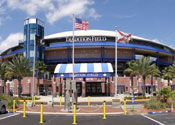
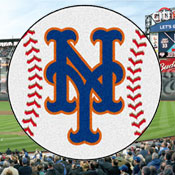

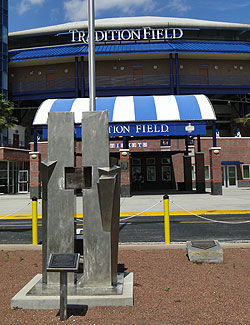 Near the plaza, an area filled with memorials is anchored by an eight-foot tall sculpture embedded with a piece of steel from the World Trade Center. The date 9-11-01 is etched into the steel that securely fits between the two twin towers that took local artist Pat Cochran a month to sculpt. The steel used within the WTC Memorial was donated by the St. Lucie/Martin chapter of the New York City Fire Department Retirees, while the St. Lucie County Board of County Commissioners, who commissioned the artwork, paid Cochran $12,000 for his efforts. The sculpture was unveiled before a Mets-Marlins game on March 30, 2005 and Tom Glavine spoke at the dedication ceremony for the piece that will serve as a lasting tribute to the 2,749 people (343 of them NYC firefighters) that were killed on September 11th.
Near the plaza, an area filled with memorials is anchored by an eight-foot tall sculpture embedded with a piece of steel from the World Trade Center. The date 9-11-01 is etched into the steel that securely fits between the two twin towers that took local artist Pat Cochran a month to sculpt. The steel used within the WTC Memorial was donated by the St. Lucie/Martin chapter of the New York City Fire Department Retirees, while the St. Lucie County Board of County Commissioners, who commissioned the artwork, paid Cochran $12,000 for his efforts. The sculpture was unveiled before a Mets-Marlins game on March 30, 2005 and Tom Glavine spoke at the dedication ceremony for the piece that will serve as a lasting tribute to the 2,749 people (343 of them NYC firefighters) that were killed on September 11th.
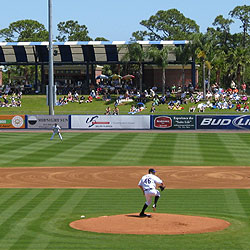 Eighteen of the current 25 spring training ballparks have berm (lawn) seating, but only in Port St. Lucie can fans bring in their own lawn chairs. That's the good news, but the bad is that only fans with a berm ticket are permitted to lounge in the outfield embankment at the Mets' winter home. So if you buy a ticket in the grandstand the berm is off-limits...and vice-versa. At every other berm bearing ballpark fans are free to roam back and forth between the grandstand and its sloped lawn.
Eighteen of the current 25 spring training ballparks have berm (lawn) seating, but only in Port St. Lucie can fans bring in their own lawn chairs. That's the good news, but the bad is that only fans with a berm ticket are permitted to lounge in the outfield embankment at the Mets' winter home. So if you buy a ticket in the grandstand the berm is off-limits...and vice-versa. At every other berm bearing ballpark fans are free to roam back and forth between the grandstand and its sloped lawn.
